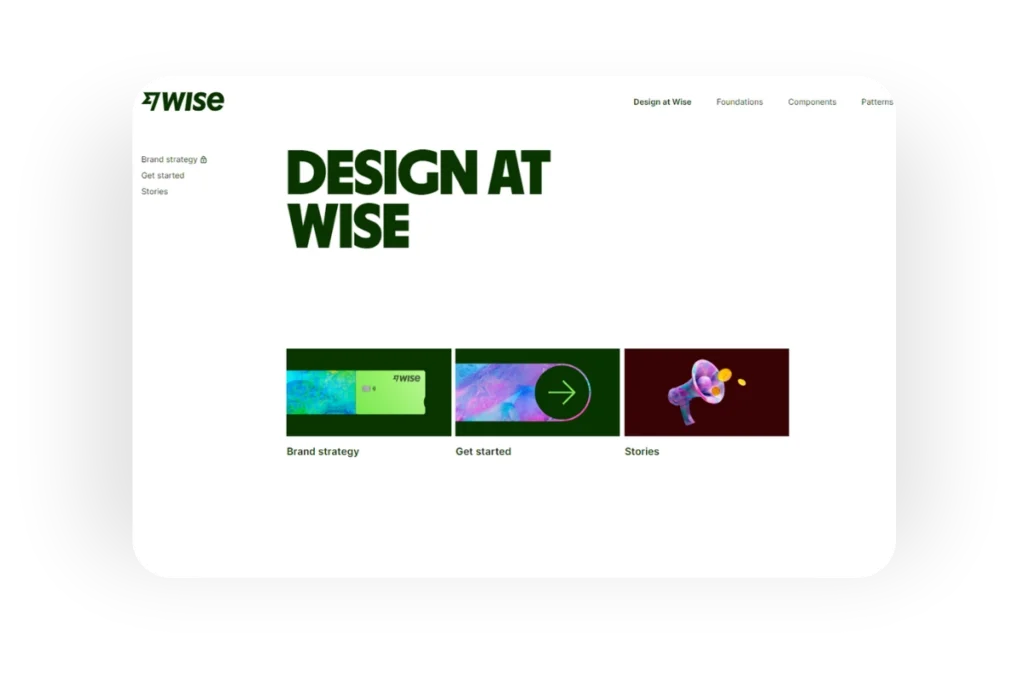What do you think of when you hear the term ‘brand compliance’?
For many, it might signify logos, custom colors or fonts – the visual identity of a brand. But the truth is, the meaning of brand compliance is much more than that. It’s about creating a consistent and trustworthy image, delivering a consistent customer experience and building a relationship with your clients that will last for years to come.
In this blog, we’ll take a closer look at what brand compliance really means, the true cost of inconsistent branding, and how brand compliance software can help enforce guidelines and build stronger relationships with clients.
What is Brand Compliance?
Brand compliance means following set guidelines to keep your brand consistent across all consumer touchpoints. This includes everything from logo placement and color usage to tone of voice across all communication channels and formats.
Whatever deliverables your firm produces, whether it’s information memorandums, pitchbooks or recurring reports, brand compliance ensures that the message is conveyed in a way that’s consistent with your firm’s values, mission and image.
On the other hand, inconsistent branding can dilute your core message, impact your reputation, and ultimately hinder your bottom line.
The Benefits of Brand Consistency
Prioritizing brand consistency is not just a choice but a strategic imperative that can benefit all parts of your business operations.
For example, a consistent brand identity can drive client loyalty, repeat business and growth. Internally, it champions collaboration and consolidates a shared appreciation for brand identity, which can turn employees into solid brand ambassadors.
Improve Client Loyalty and Attract Repeat Business
Brand compliance primarily focuses on fostering a consistent and reliable image of a company – an effort which, in turn, garners higher levels of client trust. This trust breeds loyal clients who become ambassadors by promoting your brand through word of mouth. Brand compliance is therefore pivotal in nurturing stable relationships with your clientele.
Moreover, maintaining a solid corporate identity aids in increasing client retention rates. According to studies from Bain & Company, even a 5% increase in client retention could translate into profit increments of up to 25%. In other words, ensuring each touchpoint aligns with your brand standards improves the chances of repeat business, which in turn bolsters overall growth.
Better Persuade Prospects
Lastly, a well-established brand identity acts as a beacon for potential new clients. A unified representation of your firm helps persuade prospects about your services’ authenticity, professionalism and credibility.
Boost Collaboration and Brand Identity Internally
Insisting that different departments work together towards maintaining consistent messaging invariably fosters better teamwork. On being involved collectively in preserving the integrity of the firm’s image, employees develop an understanding of their roles relative to larger firm-wide goals and increase fulfilment in their day-to-day roles.
Additionally, adhering to strict brand guidelines helps instil pride amongst teams about being part of the entity they’re helping shape. This can directly influence employee morale, motivation, and overall satisfaction within your firm.
The Costs of Non-Compliance
UpSlide’s 2025 Accounting and Advisory report found that 99% of advisory firms face some form of branding challenge. These challenges, including non-compliant deliverables, can come with significant costs. Whether the result of deliberate decisions or unintentional mistakes, going off-brand may seem minor at the time but can lead to serious long-term consequences.
Dilution of Brand Identity
Clients come to recognize a brand by its consistent use of logos, colors, typography, and language. But what happens when those elements become inconsistent?
Brand identity quickly dilutes, developing confusion amongst clients in the form of:
- Disorientation: clients feel disoriented when faced with unfamiliar or conflicting branding elements. They lose the inherent trust-winning sense of familiarity associated with your brand.
- Miscommunication: inconsistent usage may alter a logo’s appearance or a slogan’s message, causing confusion among clients about who you really are and what you stand for.
- Splintering effect: as more off-brand material is produced, it creates a splintering effect. The more variations that exist in the market, the less powerful each one becomes.
Failure to comply with brand standards leads clients to a guessing game – detrimental to any firm that relies on client recognition and trust in decision-making.

Damaged Reputation
The perceived value of your brand isn’t determined only by clients but also by partners, employees and other key stakeholders.
Broad stakeholder faith dwindles when they spot inconsistencies with your brand guidelines. Lack of unanimity hints at deeper organizational issues — lack of strategy or standardization perhaps — which sends alarm bells ringing. The adverse effects include:
- Decline in relationship quality: partners start doubting an organization’s reliability, leading them to reconsider future collaborations or contract renewals.
- Failure to maintain a competitive edge: organizations with inconsistent branding can struggle to differentiate themselves in a crowded marketplace.
- Decrease in employee motivation: staff members feel demotivated working for a brand that lacks a true identity due to inconsistencies and confusion.
In 2025, reputation can make or break business success, so maintaining solid, trusting relationships with stakeholders should be firmly on the agenda. Consistent adherence to brand compliance is critical in upholding your corporate identity and ensuring those relationships remain strong.

Create Clear Brand Guidelines that Make Compliance Easy
Creating clear brand guidelines is crucial for sustaining a consistent brand identity.
However, understanding how to design these standards effectively, appreciating their role across various collateral, and ensuring they’re accessible to all stakeholders is often put on the back burner.
Here are the steps you should take to create effective brand guidelines that enforce compliance:
Define the Elements
Brand guidelines should be crystal clear about what your corporate identity represents. They should outline specifications on how to apply the elements of your logo, colors, typography, and tone of voice to ensure brand compliance and guide teams when producing on-brand collateral.
The logo often acts as the face of your company, and hence, any improper usage might distort its perception. Here’s some general rules to follow:
- Include dimensions for proper logo sizing along with acceptable variations.
- Select distinct yet complementary colors that align with your corporate feel and evoke desired emotions among audience members. Provide RGB (used for digital designs) and CMYK (used for print designs) codes for color accuracy.
- For typography, identify primary and secondary fonts that reflect your brand persona. Specify font sizes for different headings or text categories.
- Decide or refine your brand’s tone of voice (ToV) to deliver better impact with your content. A strong ToV can evoke an emotional resonance with consumers and help them relate better to your messaging.
If you’re looking for a good example of comprehensive brand guidelines, Wise has recently made many of their own resources public.

Include Do’s and Don’ts for Various Materials
Specifying strict do’s and don’ts helps to enforce brand consistency across various kinds of branding materials:
- Print media like brochures or flyers must maintain color schemes as per given codes, considering printers’ tendency to alter hues slightly.
- Client-facing documents such as PowerPoint presentations must respect up-to-date templates and appropriately use elements and colors.
- Digital mediums demand careful consideration, especially concerning size specifications, since platforms have unique requirements which potentially alter image quality if not adhered to correctly.
You should also consider the role of accessibility in your materials to foster inclusivity, meet legal standards, and positively impact brand reputation by ensuring information is easily accessible to all users. This could include making your guidelines available in multiple formats.
Need help? Take a look at Medium’s advice on making brand guidelines more accessible.
Educate Stakeholders
A crucial component in achieving brand compliance is ensuring that all stakeholders, especially client-facing teams, understand what is expected from them.
Train Employees
Employee training plays a vital role in achieving brand compliance. Here are some reasons:
- Enhances understanding: employees should understand the importance of complying with your unique corporate identity standards. They need to grasp not only ‘what’ but also ‘why’. Clearing up such nuances aids in boosting their motivation towards consistent efforts.
- Helps adherence: detailed orientation ensures everyone knows precisely what to do when delivering materials aligning with brand standards.
How to Train Employees on Brand Compliance
To implement efficient training around these areas, your firm should conduct regular workshops or training sessions on various aspects of branding, such as language tones and visual design principles – you could even rely on a third-party provider to do that.
Ensuring brand compliance becomes less challenging once all stakeholders clearly understand their roles in defending the integrity of your brand. With revealing training methods and a well-structured feedback system, you anchor your firm’s commitment to brand consistency while fostering a culture of open communication.
Use the Power of Automation to Enforce Guidelines
Maintaining brand compliance across the whole financial firm can be daunting for a marketing team, already bogged down by reviewing and editing requests from the wider business.
To help save time and ensure your team can focus on more rewarding and impactful work, you should invest in a brand compliance solution that uses the power of automation to manage, distribute and update content effectively.
What to Consider
There are several factors to consider when choosing a brand compliance solution, such as the size of your firm, the complexity of your brand identity, and the level of customization you require.
You should also consider the type of documents your team produces and the functionality you require to ensure brand consistency. The right brand compliance tool should embed critical corporate identity elements into routine functions, such as creating marketing materials or crafting client-oriented pitchbooks and reports – making them easily accessible yet secure from unauthorized modification.
Some of the features and functionality you should be looking for include:
- A centralized library to streamline access to approved material: content libraries maintain brand consistency by offering teams a go-to resource of pre-approved assets. It can also accelerate content creation timeframes as resources are readily available, reducing email back-and-forth and multiple rounds of reviews.
- Formatting features to instantly apply company branding to various elements: this can help your team automatically apply pre-set company styles, like colors, border width and fonts, to ensure brand consistency. The real cherry on top? When a solution offers an integrated Formatting Toolbar into PowerPoint that can be undocked, moved and resized to best suit your workflow.
- Automated proofing to cut time on reviews: this can help all employees identify errors such as typos, incorrect fonts, misaligned shapes and empty placeholders and fix them quickly – without needing multiple reviews or marketing feedback.
Benefits of Automating Brand Compliance
The benefits of implementing automated brand compliance tools, such as UpSlide, are huge.
Benefits include:

- Measured impact: with detailed tracking capabilities, you can monitor how well your branding efforts are performing and make data-based decisions on where to optimize.
- Increased efficiency: by eliminating the need for constant manual oversight, an automated solution expedites the creation and reviewing processes and makes creating and disseminating branded materials more efficient.
- Improved consistency: a brand compliance solution ensures all deliverables consistently align with your established brand image or identity, reducing chances of dilution or confusion among clients.
However, even the most robust technology platform isn’t foolproof, and occasional errors that inaccurately reflect your firm’s messaging or visual guidelines can slip through.
To mitigate this, choose a provider who offers adoption support to familiarize all stakeholders with the solution and further drive home what brand compliance entails and why it’s crucial to their department’s function.
Case Studies: Effective Brand Compliance Strategies
In today’s competitive markets, where reputation is paramount and customer experience is now a key differentiator, brand compliance plays an increasingly important role in business growth. Internal buy-in and flawless on-brand deliverables are crucial to avoid diluting your identity.
Campbell Lutyens
The team at Campbell Lutyens, a global and independent private capital advisor, produces large volumes of PowerPoint documents daily. They used to spend hours ensuring each one was accurate, on-brand and impactful. They wanted to make it quicker and easier for teams to build quality PowerPoint documents.
Following the implementation of a brand compliance tool, they managed to save eight hours per user per month that would’ve been otherwise spent looking for the right documents and on reviews.

“Before UpSlide, everyone had their own process, so the deliverables were inconsistent. Now we’re all following a single process and using one central tool, documents are much more consistent.“

Anthea Cumming
Head of Creative Services
Singer Capital Markets
After a merger in 2012, Singer Capital Markets had a problem maintaining brand consistency across their client-facing materials. Pitch decks varied across teams and bankers, making it challenging for the marketing team to ensure homogeneity.
They needed to provide teams across the business with easy access to the new, compliant materials to enable them to produce high-quality, branded documents faster and more autonomously.
UpSlide helped facilitate their rebrand and provide a tool to help them ensure the adoption of the new brand internally, across all teams.

“UpSlide helped ensure each stage of our rebrand was a success, from the initial design phase to post-launch adoption. The real cherry on top? They’ve allowed us to demonstrate the ROI of the rebrand through library usage statistics.”

Joanna Osborne
Head of Marketing

TL;DR
Brand compliance is increasingly important in an ever so competitive market. It can turn clients into loyal ambassadors, improve internal collaboration, and ultimately drive business growth.
The hidden costs of non-compliance are huge, from diluting your brand’s identity to losing client trust.
Use automation tools to enforce guidelines and ensure teams company-wide create on-brand, consistent deliverables that better represent your firm’s quality of service.
Ready to Master Global Brand Compliance in 2025?
In today’s competitive markets, where reputation is paramount and customer experience is now a key differentiator, brand compliance plays an increasingly important role in business growth. Internal buy-in and flawless on-brand deliverables are crucial to avoid diluting your identity.
However, brand guidelines and consistency are hard to enforce manually—especially across enterprises—so brand compliance software should be a top priority in your next strategic investment.
Features like a centralized content library, formatting capabilities, and automated proofing will help maintain brand consistency across documents and materials – saving time, enhancing your team’s efficiency, and ultimately delivering a better client experience.
If you’d like to learn more about brand compliance, bookmark our Knowledge Hub or sign up for our webinar, Rebrand into a Global Financial Powerhouse, for more strategies on ensuring brand cohesion company-wide.











